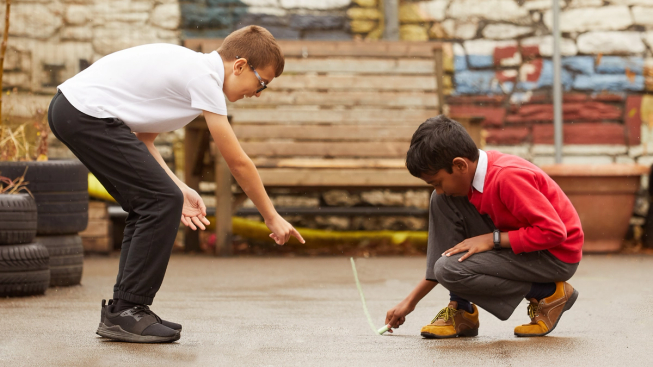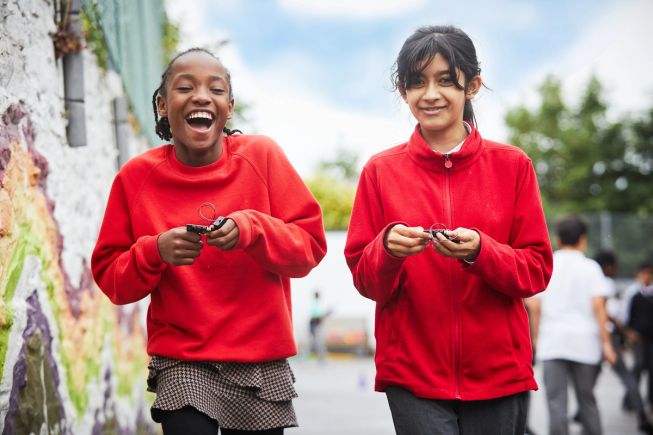Step 1: Introduce it
First, watch the video
Visit BBC Teach to watch the playground survey activity video and download the complete set of teacher instructions.

How it works
- This program calculates distances by multiplying step length by the number of steps you take.
- Use the average step length provided, or calculate the average step length for your class in metres, and input it when coding your micro:bit.
- The program works by increasing the 'step count' variable by 1 each time button A is pressed.
- Pupils divide the playground into rectangles, then carefully walk the length and width of each rectangle, pressing button A each time they take a step.
- They press button B to see the distance they have walked in metres.
- Reset the micro:bit after each distance, by pressing the black reset button on the back.

What you need
- Playground survey pupil worksheets for recording and pens or pencils
- micro:bit and battery pack for each pupil, pair or small group
- MakeCode editor to code (optional) or downloaded hex file ready to use
- To put code on your micro:bit you will need one of the following:
- a computer (e.g. laptop or Chromebook) and a micro:bit USB lead
- an Android tablet with the micro:bit USB lead and an adaptor (support article with more detail)
- an Apple iPad with Bluetooth enabled and the micro:bit app (support article with more detail for Apple iPads)

Step 2: Code it
This step-by-step video shows you how to code your micro:bit to become a distance calculator:
Make it your own
- Calculate the average step length for your class and modify the code to use that number instead. See teacher instructions for support.
- Personalise by adding a sound to celebrate your total when you press button B.
- Add cardboard to make the buttons easier to press, as seen in the Improve it section of the Emotion badge project.
- Use this wheelchair distance calculator code that can automatically detect when your wheel rotates.
Step 3: Use it
Gather data in your playground
Transfer the code, and plug in your battery pack to get started.
Follow the teacher instructions for this fieldwork session.
Encourage pupils to make predictions based on their current mathematical knowledge before you begin.
Note down the lengths and widths measured on the playground survey pupil worksheet.

Step 4: Analyse & use data
Once you have calculated the area of each small rectangle by multiplying the length by the width, record them on the pupil worksheet and share your measurements with your class.
Working together, calculate the class average area for the whole playground and record it on the playground survey class poster.
Use the teacher instructions to support analysing the data together in the classroom. You could ask the following questions:
Link back to what we wanted to find out:
- What is the area of our playground?
- Were our predictions correct?
Consider our playground space:
- How do you think this will compare with other playgrounds in the UK?
- Are there challenges for us in terms of how we use the space?
- Do you think we use all the space we have?
Looking ahead:
- What action do we want to take based on our findings?